Our lives are filled with technologies. They're everywhere. We live in them, write with them, play with them and experience through them. Our world is largely a constructed environment; our technologies and technological systems form the background, context and medium of our lives. It is difficult to imagine a life that does not involve any kind of tools, devices or machines. The evolution of our human existence is based on the discovery of tools and how they make our lives easier to deal with. Tools have rethought how we view the universe and our relationship to it.
The selection of objects that are part of the technology class is enormous. It includes everything from low-tech handheld tools such as hammers, high-tech digital devices, to highly complex technological systems. The technology philosophy examines the nature of technology, as well as the effect and transformation of technologies on human knowledge, activities, society and environments. The goal of the technology philosophy is to evaluate and critique ways in which technologies reflect as well as change human life, individually, socially and politically. In this section, I will illustrate this by examining the development of a technology - the telescope - and its enormous importance as an instrument of knowledge and philosophical discussion.
Old Earth Astronomy
The "Galileo affair" is the most debated case of a conflict between science and religion due to technological advances. The confrontation between Galileo (1564-1642) and the Roman Catholic Church was centered on the state of the scientific debate at the time about the comparative advantages of old and new concepts about the structure of the universe and the lands that lie within it. The ancient earth-centered astronomy of Claudius Ptolemy (second century AD) laid out a fixed universe in which the earth was the center and the sun, moon, planets and stars revolved around the earth. This model was accepted for centuries after in Western thought. One year before his death, Nicolas Copernicus (1473-1543) published his lifelong work On the Revolutions of the Celestial Bodies . The opening chapters of The Revolution lay the philosophical foundation of a moving earth a fixed central sun, and point the sun "as on a royal throne that rules the planets orbiting it". The chapters that follow include theories of basic trigonometry, a catalog of fixed stars, the theory of the sun, and the theory of planetary latitudes. Copernicus never fully explained its rationale for considering a heliocentric event and was not supported by any clear scientific background.
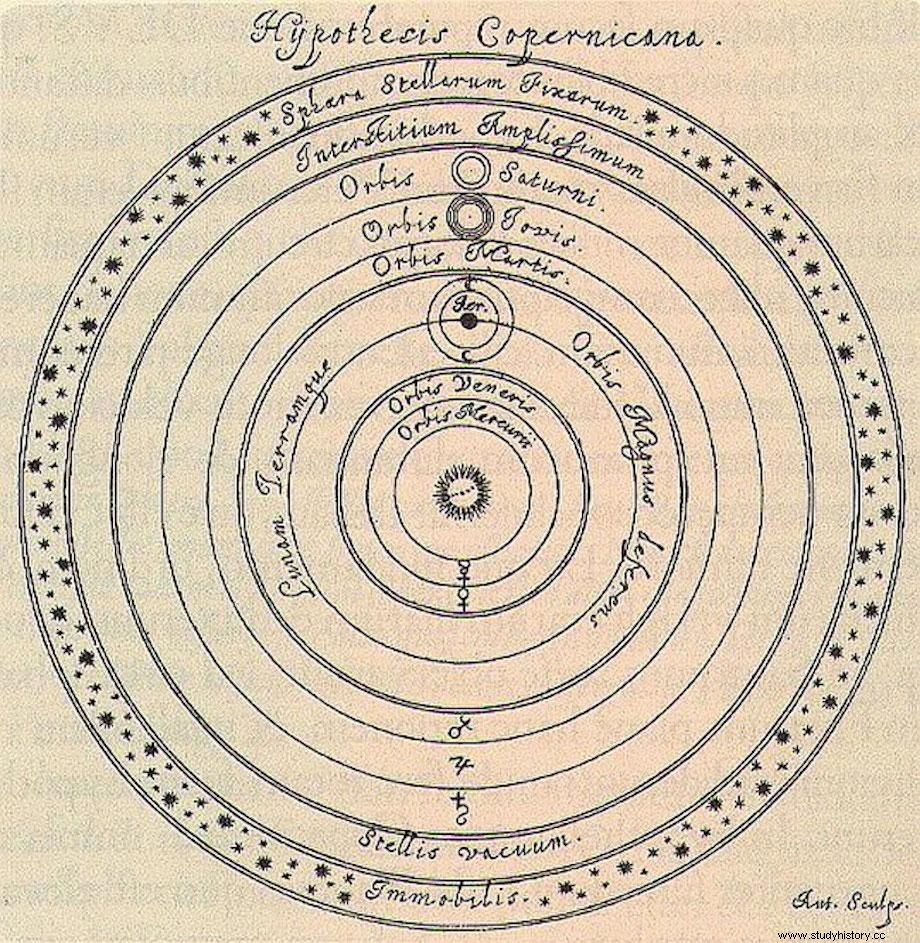
Galileo Galilei
The historical and well-known case of Galileo Galilei is both tragic and transformative. His observations through new technology dramatically affected astronomy and its implications. In Galileo's time, Western European culture underwent some fundamental and disturbing changes. Modern science, with its emphasis on experimentation and observable results, came into its early existence in the first decades of the sixteenth century. Galileo adopted the method of observing and conducting experiments on actual objects in the natural world. Until this new approach, science at that time was the Aristotelian philosophy of nature, whose research methods relied on Aristotle's writings to answer scientific questions. At his local university in Pisa, Gallio began his new approach to observation, making several new discoveries that contradicted Aristotle's science.
For example, Aristotle had written that bodies fall due to weight and deduced that the rate of fall is proportional to weight. Thus, a cannonball of ten pounds would fall ten times faster than a cannonball of one pound. Legend has it that Galileo carried out experiments by dropping objects of varying weight from the Leaning Tower of Pisa to disprove Aristotle's view. The importance of these discoveries was not only a new birth of classical physics, but also an important beginning in observational experiments.

Birth of the observation
In 1610, Galileo learned that a Dutch lens grinder, Hans Lipperhey, had developed an optical instrument that allowed distant objects to appear much closer to an observer. He immediately saw this invention as an instrument of new observation and went on to construct a new and improved way of looking into our universe, the refractor telescope. Using convex lenses, he created an instrument that could look at an object from a distance, and it seemed larger.
This led him to a number of important astronomical discoveries; that the surface of the moon contains craters and mountains, and that Jupiter has four moons. With careful observation and a recently improved instrument, Galileo found indicators that the sun is changeable and rotates on its own axis, disproving the long-held idea that the earth is the center of our universe. Tragically, Gailieo's ideas were rejected by the Roman Catholic Church and were not widely accepted until years later.
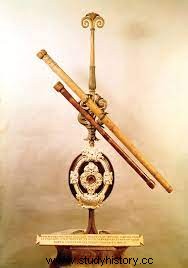
Refracting Telescope
Galileo's refractor telescope is the prototype of the modern refractor telescope. The larger the telescope, the larger the object appears to be. Before the 20th century, however, there was a limit to the size of a refracted telescope due to the glass then available. Pyrex glass was a new type of glass at the time that could be cooled evenly and was a better and more efficient glass for use in telescopes.
George E Hale at the beginning of the 20th century, determined to be the leading power in the United States of astronomy, was dedicated to creating the largest telescope of all time. Yerkes Observatory, founded by Hale and Charles Yerkes, held a telescope with a mirror forty inches in diameter. Larger telescopes with larger glass mirrors began to revolutionize new ideas, including the fact that the universe is far larger than previously thought, and that it is still expanding.
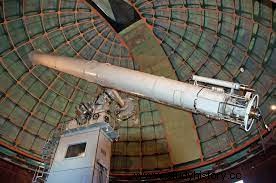
The modern telescope
Using modern telescopes, nebulae were discovered in the galaxy. Through a telescope fog became blurred spots of light, but their discovery raised the question of what these lights were and what were their causes. Spiral nebulae are more regular in shape, with a dense center and spiral arms. Edwin Hubble and Mt. The Wilson Observatory looked at these spiral nebulae and discovered the nebulae as galaxies off the Milky Way. His observations made him question how bright these spiral nebulae are and which stars are brighter or farther away.
Hubble further observed that most stars shine at constant brightness, defining this theory as Cepheid variables. These stars because the brightness varied evenly, could be used to calculate astronomical distance due to the direct correlation between the star's brightness and the period. The spiral nebula Hubble observed that he also identified himself in the Andromeda galaxy, the largest and closest galaxy to the Milky Way. Hubble discovered Cepheid variables in Andromeda 10,000 XNUMX times farther away than any star in our galaxy. He concluded that these stars could not possibly be in our galaxy. These discoveries dramatically increased the size of the understood universe and made the universe incomprehensibly large.
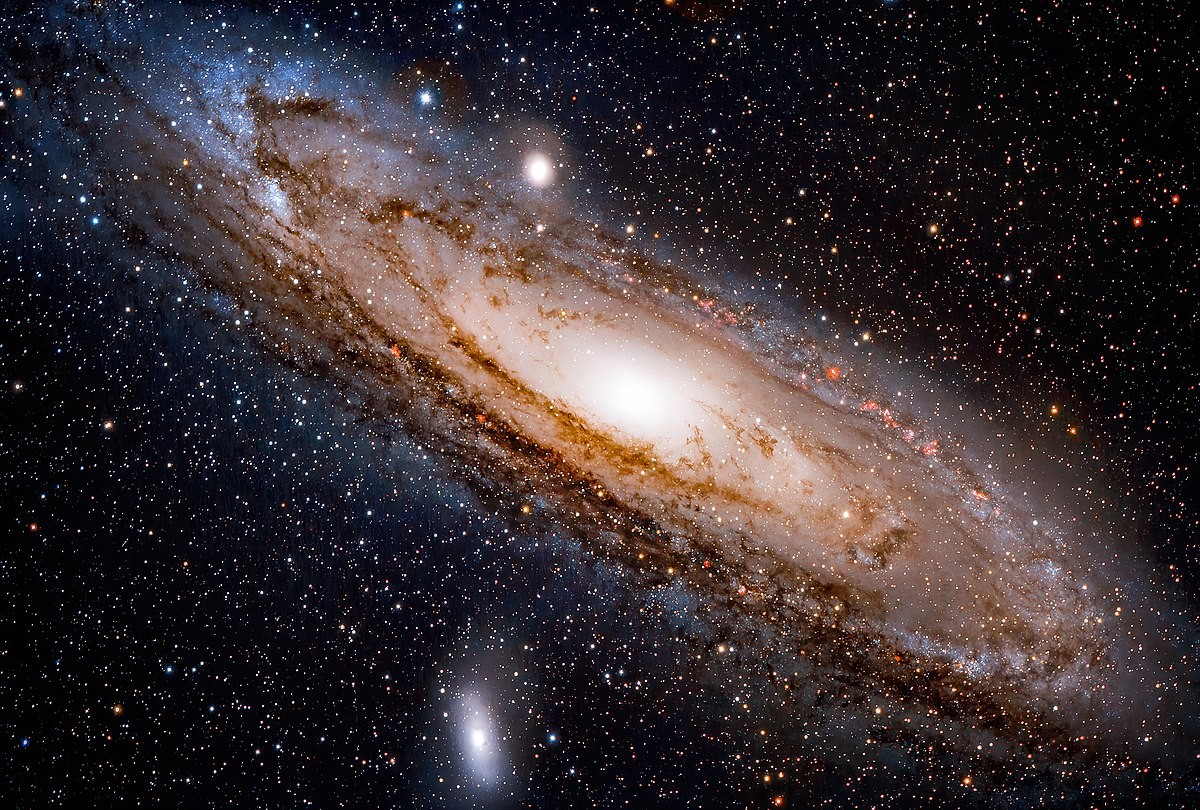
The expanding universe
Using Cepheid variables and other methods, Hubble was able to calculate the distance of galaxies and how fast they moved. His theory, Hubble's law, includes red shift. It is assumed that half of the stars are moving away from our galaxy and half are moving closer, and we are part of a rotating plate. Each galaxy has a red shift and moves away from our galaxy. In 1929, Hubble produced the theory of expanding universe. He concluded that the closer the galaxy is, the slower it moves from our galaxy, and the farther it is, the faster it moves. An expanding universe implies that there must have been a beginning where the universe was smaller, supporting the Big Bang theory of its origin.
Big Bang Proof
Ralph Alpher and George Gamow theorized it was an expanding atom that was initially hot, and over time the temperature in the universe has cooled. Using computers from the new generation, Alpher and Gamow worked on a sophisticated idea of the universe originating from the atom, saying that an atom had a dense initial state, and that it expanded very rapidly and caused the Big Bang. Using an IBM computer and generating a model of our universe showed that an initial hot dense state of an atom could produce a universe like ours.
In 1960, Arno Penzias and Robert Wilson built an antenna to receive and transmit microwave signals. Their signals picked up low level background noise. At the same time, Robert Dicke at Princeton University was researching a background radiation that was left over from the Big Bang. Their combined efforts discovered cosmic background radiation which is electromagnetic radiation as a remnant from an early phase of the universe, the Big Bang. After the discovery, scientists took the Big Bang as the probable origin of the universe.
The Radio Telescope
Bell Laboratories started in the 19th century as a research and development branch to improve the telephone. In 1928, Karl Jansky asked what is naturally static and how do we counteract it. At Bell Telephone Laboratories, Jansky built an antenna to receive radio waves. He found three types of static:thunderstorms, distant thunderstorms and a steady unknown static that was later discovered as radio waves produced from the Milky Way.
After Jansky announced his discovery of radio signals in 1932, Grote Reber read Jansky's newspaper on radio power and was inspired to do further research. He set up a radio antenna in 1937 in his garden which was used as a radio telescope. The radio telescope later allowed the discovery of quasars that are extremely distant galaxies from the origin of the universe. Their discovery was noted as radio sources with no corresponding visible object. While examining quasars in a radio telescope, Jocelyn Bell in 1967 noticed a repetitive, repetitive signal. These repeated signals were pulsars that occur when collapsed stars emit rays. The term pulsar is an abbreviation for "pulsating radio star". The discovery of pulses proved to be important for astrophysical research. Studying the radio waves from these stars, scientists could now test basic theories in physics, detect gravitational waves and better navigate our cosmos.
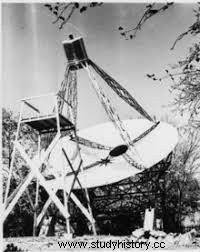
Anthropology:Technology and its effects on society
Advances in telescopes began the more intensive study of our universe and the galaxies and stars inside. Developments in other technologies such as computers and antennas further advanced the understanding of our universe, including the acceptance of the Big Bang as its origin, and that the universe is not only incomprehensibly larger than previously thought, but that it is still expanding. Technology conveys and governs society in a complex and cross-cutting system for discovery and adaptation. For almost two thousand years before the Galileo affair, the universally accepted view of the sky in Western culture was the geocentric theory proposed by Aristotle. The Catholic Church in the sixteenth century had a conservative view of theological and scriptural matters. The importance of Galileo's observation was in direct opposition to the fact that the earth was the fixed center of the universe. The Catholic Church took its theories on track as a clear message that these ideas were blasphemous and should be rejected. As generations passed, new evidence slowly accumulated, and observation became a more important tool of understanding than biblical literature.
The social construction of technology is the idea that society simultaneously shapes technology as technology shapes society. Thus, humanity and technology lie in a circular relationship, each of which affects each other. As new technology became possible, so did the theories that relied on them. The importance of Galileo was the introduction of observation into experimentation. By pushing away from old theories based on the church, he opened a new insight for other astronomers, physicists and modern thinkers. These new theories would not have been possible without the new advances in tools and design. The creation of the telescope created a Big Bang effect, if you will, on modern advances in technology and its societal implications. The world was much smaller in the sixteenth century. Before the telescope, the earth - that is, humans - was seen as central to the universe, which literally revolved around it. With the discovery of an expansive universe, social implications for humans and their place in the universe changed forever.
